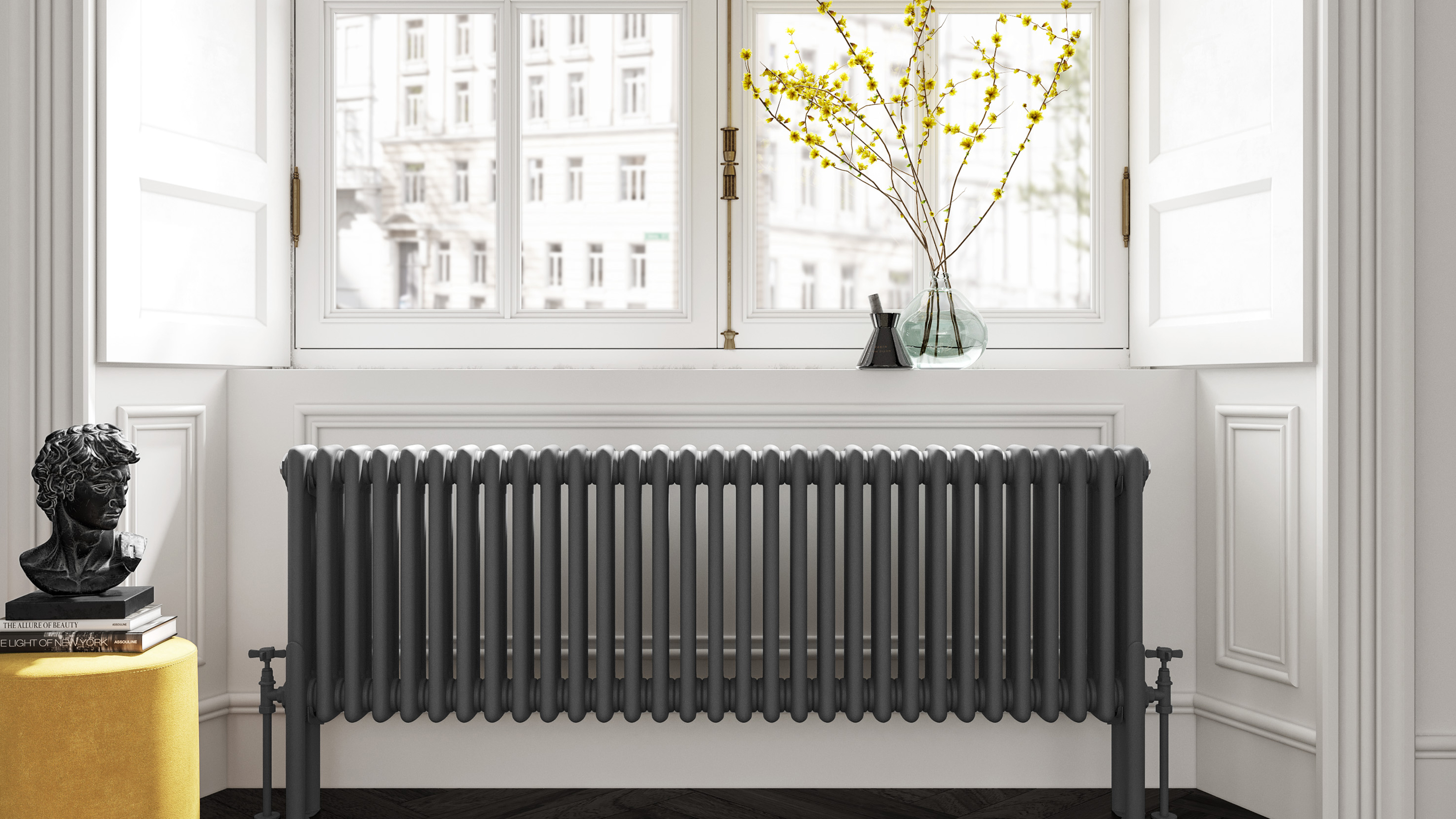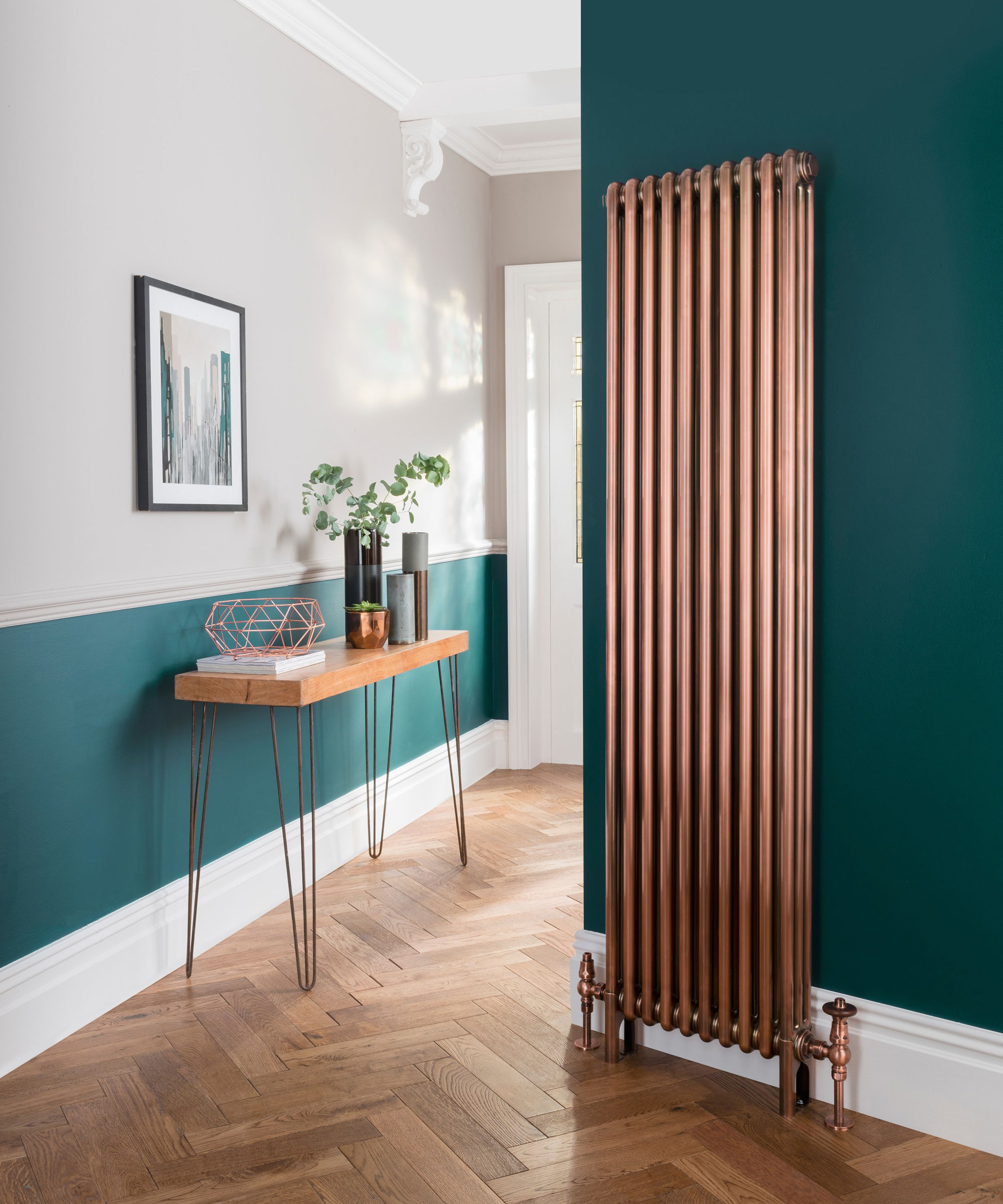Radiators cold at the bottom? How to fix them according to experts
Are you radiators cold at the bottom? Experts explain what causes this common heating problem and how to fix it

If your radiators are cold at the bottom and hot on top, you'll want to fix the problem as soon as possible. Not only are radiators that are unevenly hot not doing a proper job of keeping your home warm during cold weather, but radiators cold at bottom also waste energy, making your boiler work harder and your energy bills higher.
To fix the problem of half-cold radiators, you'll likely need to learn how to bleed a radiator, and you may well also need your garden hose. At any rate, don't ignore this problem – learn how to fix it before it gets worse.
Why are my radiators cold at the bottom and how to fix them?
Depending on what the problem is, you may be able to fix the problem yourself whether they're upstairs or downstairs radiators cold at bottom. Fortunately, there aren't that many variables where it comes to unevenly heating radiators.
Jimmy Jackson, strategic HVAC Advisor at Texas-based YouthfulHome.com and a master technician with over 25 years of experience, explains that 'if one or two of your radiators are cold at the bottom, one of two things is the culprit.'
The first case scenario, according to Jimmy, is that 'you may have air trapped in the radiator.' To find out, 'bleed the radiator. Locate the bleed valve. It should be on one side at the top. Place something under the radiator to catch any water that runs out.
'Turn off your heat so that water isn’t being pumped through the radiator as you bleed it.
'Slowly open the bleed valve. Trapped air will escape with a hissing sound. When the hissing stops, water will come out of the valve. Shut the bleed valve and you’re done. While you’re at it, you should bleed all the radiators.'
Get small space home decor ideas, celeb inspiration, DIY tips and more, straight to your inbox!
Air trapped in a radiator has an easy DIY fix. However, 'if the problem isn’t fixed, you probably have accumulated dirt and rust (sludge) in the pipes. This will take power flushing by a professional.'

Radiators cold at bottom: flushing out sludge and what not to do
If you feel confident in your DIY abilities and know a bit about the different types of heating, you can flush out the sludge from your radiators yourself. Chris Harvey, a central heating expert at radiator manufacturer Stelrad, believes that 'although a slightly messy job, this is something you can do yourself.' Just remember to wear old clothes while you're doing it.
Chris recommends starting by 'isolating the radiator by turning down the thermostatic valve. This should be turned down to Zero and make sure that you have locked the lockshield, this will isolate it from the system.'
The next step is the draining of the radiator. You'll need to 'place an old bowl on a towel under the radiator to ensure that all the water and the sludge are caught when it is released.'
A top tip from Chris when you are draining the water – 'it is important to make sure that you turn the nuts on the radiator, this will help to make sure that all the water is fully drained.'
Open the bleeding valve and bleed the radiator. Once all the water is gone, you can take the radiator off and take it outside. 'You can then attach a hose to one end and flush out the radiator until clear water comes out the other side.'
After flushing, 'you can dry the radiator off and you can then bring the radiator back inside and re-attach the pipes and nuts and bolts and wait for the radiator to fill, you should then bleed the radiator of any air to ensure that it is filled properly.'

Whether you do the flushing yourself or hire a professional, this is a job that must be done if your radiators are cold at the bottom and you've established it's not just air trapped in there. Even the best radiators will get clogged over time, but you are especially likely to experience this problem if you live in an older home.
Chris cautions against turning up your thermostat 'to compensate for the cold patches. This won't solve the issues and will instead increase your heating bill every month.' This isn't a boiler problem or thermostat problem, so you won't solve it this way.
What is the quickest way to balance your radiators?
If you're noticing that some of your radiators are a lot hotter than others, it may be necessary to balance them to ensure an even distribution of heat. However, Kimmy cautions that 'there really isn’t a quick way to balance radiators. Radiators closer to the boiler heat faster. To balance them you adjust the valves on each radiator until they give a consistent temperature reading throughout the house.'
Realistically, this is a job for two or more people – according to Jimmy, 'the fastest way to balance radiators is to have several helpers do it with you.'

Can you bleed a radiator with the heating on?
The answer to this one is a straightforward 'no.' Gerald Carpenter, a professional plumber in the third generation and consultant on Sanitary Review, explains that
'Before you start bleeding a radiator, you have to turn the heating off and
let the radiators cool down. Otherwise, the water will be too hot and spray
under pressure when you turn the valves. That’s something you definitely
don’t want to happen!'
So, heating off, old clothes on, garden hosepipe ready. Or, if none of this sounds like something you want to do, just call the plumber.
Anna is a professional writer with many years of experience. She has a passion for contemporary home decor and gardening. She covers a range of topics, from practical advice to interior and garden design.